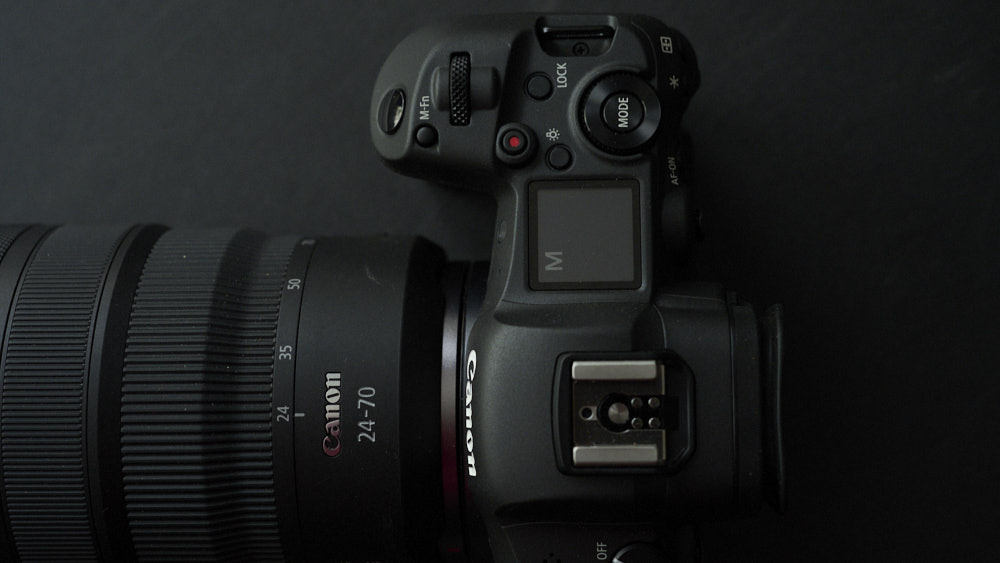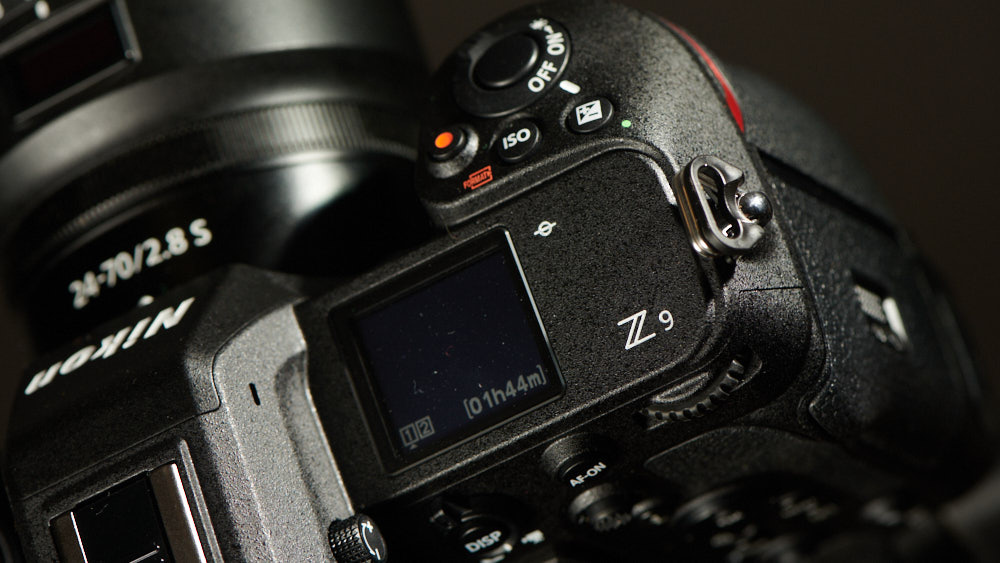Sometimes, loyalty is the gift that keeps on giving. Now, before a large sector of the reading audience skips straight from the title of this essay to the comment section to tell me I’m a fanboy or being foolish for proposing the idea that committing to one brand is sometimes a good idea, let me start off with a few concessions.
We live in a modern world saturated with more amazing technology than any one person can ever keep track of. And just because you’ve used one brand for a long time doesn’t mean that you should continue to use that brand in the future. Brands evolve. But, more importantly, artists evolve. So, the tools that were right for you ten years ago may no longer be the best option for your current interests. I, for one, am constantly reassessing my gear needs as my work continues to move in new and exciting directions, some of which were planned, others not. So, I am not here to tell you not to change brands if that’s what suits your needs.
But having been put in the blessed position of being able to have used almost every brand on the market over a long career, I can say with 100% honesty that changing brands isn’t always what it’s cracked up to be. In fact, more often than not, you’ll find that staying put with what you have will end up saving you time, money, and a great deal of headache.

But What About the Feature Set?
As I mentioned earlier, there are legitimate reasons to blow up your gear collection and shift to a different brand to address shifts in your practical needs. But, if we’re being honest, most of the time that we find ourselves peeking over the fence into the neighbor’s yard, it isn’t because our current system is completely devoid of the tools we need to do our job. Another brand may have a better implementation of a particular feature. Or perhaps one brand has a reputation for being better at a certain thing than another. The hours of video produced deifying a marginal increase in autofocus speed between brands comes to mind as an example. But truth be told, outside of YouTube videos and social media posts, in the real world, these differences, while they may exist, are generally marginal in their effect. Yes, things like that matter in a lab. But, in the hands of a photographer or filmmaker who knows their craft, has taken the time to know their gear, and is working from a place of creativity rather than lab testing, those differences never seem to matter as much as brands would like us to think they do.
Even if we accept that certain brands are better at certain things than others, using that as an excuse to jump ship ignores another firm reality of technology. It’s all cyclical. What is one brand’s strength today is the same brand’s weakness a year from now. The major brands are all trapped in an endless game of leapfrog. Each sits on the throne in one way or another for a limited amount of time before abdicating months later when another brand releases their own counterargument. So, for the most part, if you are heavily invested in any of the top brands, all you really have to do in order to upgrade your feature set is wait long enough for your chosen brand to release its newest gear. Sure, that might mean that you won’t have the best feature set today. And for the next six months, you’ll have to subject yourself to hearing brand rivals extol the virtues of their system at your expense. But, trust me, it’s far more expensive to keep changing your entire system just to keep up with the Joneses. Especially when, with a little patience, you will likely get a comparable feature upgrade within the brand you’ve already chosen.

Saving A Heap Of Cash
“Why even wait six months,” you might ask. You’ve got the money to spend. Why not spend it? And, hey, if you’ve got that much disposable income then by all means spend away. But for most of us, changing brands is expensive. You not only have to think about the price of the new camera itself, but you also have to think about all the lenses, accessories, and third-party items that may or may not play nicely with the new system.
I’ll use myself as an example. After being Nikon-only for the entirety of the DSLR days, making the change to mirrorless has been a real adventure. Because I was going to have to eventually consider investing in a new lens set regardless of the mirrorless brand I chose, I put pretty much every brand through its paces to make sure I was making the correct decision. This led me to not only sample, but purchase different camera bodies from different brands in addition to Nikon. All the brands had their own strengths in relation to the other. But each body also required the purchase of at least one or two lenses fundamental to my workflow.
With every disparate purchase, the results were almost always the exact same. I’d fall in love with the new brand for about three months. Then, I’d slowly start to find things that weren’t so great for my workflow. Then I’d start to see if there was yet another brand that better addressed those issues. Eventually, I’d fall out of love with the new brand, and, more often than not, find myself right back shooting with my Nikon anyway. It was certainly fun to explore all those other brands. But gee willikers it was expensive. Especially since all that money was essentially spent to find out that I already had the best system for me all along.

Once the Z9 came along and allayed any hesitation I had about which brand I wanted to stick with in the future, I went all in. I purchased two Z9 bodies and the key lenses I needed, sold off all of the older Nikon DSLR gear as well as the rival bodies and lenses, and decided to stick with this single system. And while that might sound like a heavy investment, doing so allowed me to sell off everything not directly related to the system, so the net investment was not nearly as much as one might think. Better yet, because I am dedicated to one system, every investment I make, like a lens or accessory, can be utilized system-wide rather than just on one camera in the system.
Will there be times over this product's lifecycle when another brand will come out with a camera that exceeds the Z9’s specs in one way or another? I’m sure there will be. But, is that advancement likely to be so transformative that I won’t be able to do my work without changing systems? I highly doubt it. I’m sure I’ll hear about a new camera here or there and a specific feature will turn my head. But there is absolutely zero about my current system that doesn’t address my needs, so I can be confident that buying into something another brand, while it might be fun, won’t be necessary.

Brand Familiarity
Do you play an instrument? I don’t. No matter how hard I tried as a kid, my attempts to successfully learn to play an instrument resulted in little more than my parent’s aggravation and my neighbors praying in desperation to make it stop. But the thing about learning an instrument is that, while at first it might be all “Chopsticks” and just trying to remember which key is which, after a while, it becomes second nature and you can just play. Cameras are much the same way. You go through the initial onboarding process of figuring out where the menu items are and how to make the camera do what you want it to do. But, once you’ve committed the camera keys to your subconscious memory, you, at some point, can just play.
While a fear of trying something new is no reason to hold yourself back from growing as an artist, sometimes, having a tool in your hand that essentially allows you to forget that it’s even there is a greater boon to your creativity than all the megapixels in the world. Sticking to a single brand is akin to residing in a city where you are a native speaker. Everything over time just makes sense. You might move from one body to another within the brand. But most brands do a solid job of keeping their basic layouts familiar, so going from Mark I to Mark II is usually not a dramatic shift.
This is one of those benefits that fall into the intangible category. But getting to know a system, really getting to know it to the point of being able to play blindfolded, allows you to get the technology out of the way and get to what actually matters; creativity.
Now, surely many of you have read what I’ve just written and have still come to the conclusion that you simply cannot take adequate pictures without always having the most recent camera announced. And, by all means, that is your prerogative. But for those of you out there in the pursuit of artistic excellence, not just an influencer merit badge, know that you don’t have to constantly change systems to get the best results. Sometimes it’s best to cherish what you have, open your mind to creativity, and just play.
"loyalty" - Google News
December 23, 2022 at 05:13AM
https://ift.tt/Bpmx1fe
The Upside of Brand Loyalty For Photographers and Filmmakers - Fstoppers
"loyalty" - Google News
https://ift.tt/tvrVQCD
https://ift.tt/0hTAZOF
Bagikan Berita Ini














0 Response to "The Upside of Brand Loyalty For Photographers and Filmmakers - Fstoppers"
Post a Comment